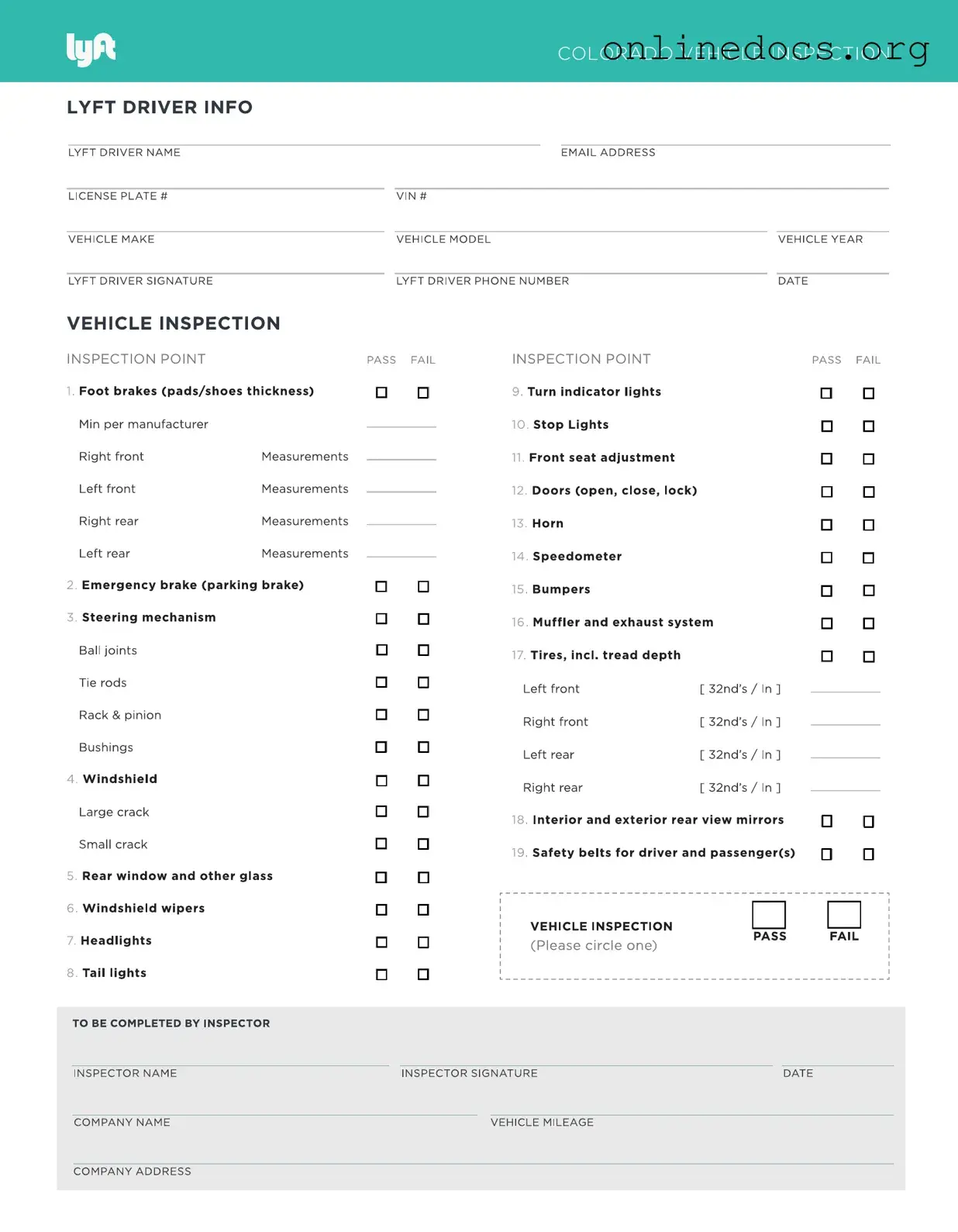The Vehicle Inspection Report is similar to the Lyft Inspection form in that it serves as a comprehensive evaluation of a vehicle's condition. This report typically includes details about the vehicle's mechanical systems, safety features, and overall performance. Both documents aim to ensure that the vehicle meets specific safety and operational standards before being used for transportation services.
Understanding the importance of having the right documents when it comes to caring for a child is essential. One such important document is the Power of Attorney for a Child form, which allows parents to designate someone else to make decisions on their child's behalf during temporary absences. For more information on this vital form, you can visit californiapdfforms.com/power-of-attorney-for-a-child-form.
The Pre-Trip Inspection Checklist is another document that aligns closely with the Lyft Inspection form. This checklist is often used by drivers before starting their shifts. It includes items such as checking tire pressure, fluid levels, and lights. The purpose of both documents is to promote safety and reliability, ensuring that vehicles are roadworthy before they transport passengers.
The DMV Vehicle Registration form shares similarities with the Lyft Inspection form, particularly in the information required about the vehicle. Both documents ask for details like the make, model, year, and VIN. While the DMV form focuses on legal registration, the Lyft Inspection form emphasizes safety and operational readiness for rideshare purposes.
The Maintenance Log is another relevant document that parallels the Lyft Inspection form. This log records all maintenance activities performed on the vehicle, including oil changes, brake inspections, and tire rotations. Both documents serve to track the vehicle's condition over time, providing insights into its reliability and safety for passengers.
The Safety Inspection Certificate is akin to the Lyft Inspection form, as it verifies that a vehicle has passed specific safety standards. This certificate is often required for commercial vehicles and includes a detailed assessment of essential safety components. Both documents ensure that vehicles are compliant with safety regulations, promoting the well-being of passengers.
The Accident Report Form can also be compared to the Lyft Inspection form in terms of documenting vehicle condition. This form is completed after an accident and includes details about damages and repairs needed. While the Lyft Inspection form focuses on preventive measures, both documents highlight the importance of maintaining a vehicle's safety and integrity.
The Emissions Test Report shares common ground with the Lyft Inspection form by assessing a vehicle's environmental impact. This report determines whether a vehicle meets emissions standards, which is crucial for compliance with local laws. Both documents emphasize the importance of maintaining vehicles not only for safety but also for environmental responsibility.
The Driver's Daily Log is another document that resembles the Lyft Inspection form, as it tracks a driver's activities throughout the day. This log includes information about the vehicle's operation, including any issues encountered. Both documents contribute to ensuring that drivers are accountable and that vehicles are maintained in optimal condition.
Finally, the Vehicle Condition Report is similar to the Lyft Inspection form in that it provides a snapshot of a vehicle's current state. This report often includes visual inspections and notes on any damages or repairs needed. Both documents aim to provide a clear understanding of a vehicle's readiness for use, ensuring safety for all passengers.
